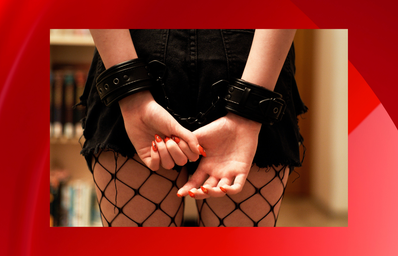Anora is hands down one of the best movies I have watched this year. I made a spontaneous decision to watch it on a random Saturday night, and I do not regret it whatsoever! One thing I could not get out of my head was the style, leading me down a rabbit hole about the costume design. The outfits were simple, but they only felt like a small piece in a much bigger story. Many spoilers incoming…
Directed by indie filmmaker Sean Baker, the film stars Mikey Madison as Anora; a street-smart stripper in her early 20s working in New York’s gritty Brighton Beach. When she is assigned a special client—Ivan, a reckless and wealthy son of a Russian oligarch—they fall head-over-heels and spontaneously marry in a classic Vegas wedding. Believing she has left her old life behind for mansions, jewels, and a better future, Anora finds herself just two weeks later being dragged across New York by Ivan’s godfather, Toros, and his two henchmen. Ivan, meanwhile, has run away in fear of his parents, who are forcing the newlyweds to annul. With her seductive stares and smooth dance moves, Ani—Anora’s preferred name—seems to thrive in her work, but we viewers see she yearns for something more. She is tired of long nights and hustling. Ivan is her way out. Jocelyn Pierce, the film’s costume designer, did an amazing job conveying this struggle.
As an A-level media studies survivor, I am trained to note the significance of costuming. The most evident to me is the sable coat Ani wears throughout the film’s second half while desperately searching for a missing Ivan. Fur coats typically radiate status and wealth. The coat Mikey Madison is costumed in is especially interesting because it is a Gorski Russian sable coat, valued at $98,500.
Sable fur is famous for its softness, durability and warmth, making it one of the world’s most precious furs. “It’s so nice to see that arc from the streetwear puffer coat all the way to glamour”, says Pierce in an interview with Variety. Ani goes from wearing a basic puffer coat, exhausted on the train home post-shift, to a luxury fur coat, smiling and twirling. The coat morphs into a symbol—her entry into the upper class.
“In her Cinderella story, it’s basically her glass slipper.”
-Jocelyn Pierce with Variety
Pierce highlights the power of the coat’s oversized silhouette. At the start of the film, Ani is shown on poles and in men’s laps dressed in tight, revealing clothes or entirely nude. In the early stages of her relationship with Ivan, her clothing remains much the same. As she ascends into wealth and status, a transition puncutated by her luxurious coat, she embodies a sense of power and control previously inaccessible to her as a stripper. She clings to the coat during the freezing early morning hours spent looking for Ivan. Once the annulment is finalised and she throws the coat back at Ivan’s disapproving mother, the symbolism of the coat appears in a new context. Ani’s discarding of a frivolous symbol represents her rejection of upper-class society and expectations. The illusion of riches has been destroyed and she stands firm in her resolve.
The fur coat’s connotations lean into a larger picture: The American Dream. At its core, the film is about a young girl trying to make a better life for herself. Pierce has mentioned in interviews the reoccurring pops of red and blue to evoke the image of the American flag. Set in New York City during a snowy winter, the film naturally incorporates the white colour of the flag. Ivan’s minimalist and neutral-toned apartment, a dominant setting of the film, depicts the flag’s whiteness also. The first time Ani visits Ivan’s house and the first time the audience sees her outside the club she is dressed in a striking blue Hervé Léger bandage dress. The Hervé Léger bandage dress was first released in the 90s and grew popular in the 2000s.
Pierce’s decision to costume Ani in this might reflect the re-emergence of 90s and Y2K style among Gen Z. The choice is a subtle reminder of Ani’s age and encourages us to sympathise with her as she faces a whirlwind of events driven by a naive attempt to improve her situation. Not only does the blue bounce off the cool neutrals of Ivan’s apartment, but also the red bed sheets Ani and Ivan had sex in the previous night, once again evoking the American flag. Pierce refers to Ani’s outfits as “aspirational dressing” in an interview with Vogue. As someone would wear a suit to a job interview, Annie wears a tempting, figure-hugging dress to her first house call with Ivan.
When Ani shows up to Ivan’s New Year’s Eve party in a glittery red mini dress and Ivan says her “boobs look great”, it is a sign that she looks the ‘part’. Other pops of red include the red scarf that follows her around the second half of the movie—used to tie Ani up, gag her, or offer some warmth in the cold. But just like the fur coat, Ani throws the scarf at Galina. Despite the symbolism, the act does not lead to Ani’s liberation. She is left to face her bleak reality, with the film closing on her painful but cathartic release of tears.
All in all, Anora is a great film that shows you characters aren’t just dressed in the first thing that pops up on Google. Although Ani’s outfits are cute, they reveal the vulnerable layers of her character, and Pierce’s detailed choices come together to construct a sorrowful story of ambition that left me heartbroken.


